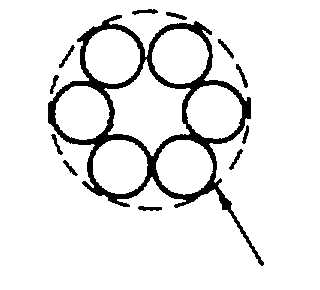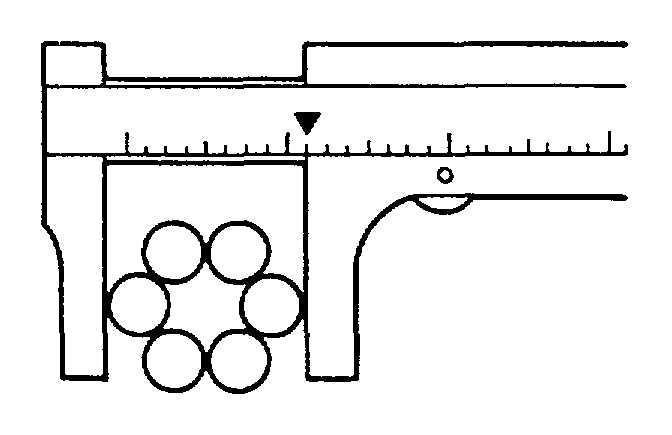TM 5-3810-306-10
WIRE ROPE AND SHEAVES SAFETY PRECAUTIONS
Always make daily inspections of wire rope and replace
worn, rusty or frayed ropes. The following information is
taken from a National Consensus Standard as
referenced by Federal Government Agencies.
All wire rope will eventually deteriorate to a point where it
is no longer useable. Wire rope shall be taken out of
service when any of the following conditions exist:
1.
In running ropes, six randomly distributed broken
wires in one lay or three broken wires in one strand
in one lay.
2.
Wear of one-third the original diameter of outside
individual wires.
3.
Evidence of heat damage from any cause.
4.
Reductions from nominal diameter more than 3/64
inch for 3/4 diameters.
How to measure or caliper a wire rope (allowable
limits -0 + 5%)
A. "TRUE" DIAMETER
B. CORRECT
C. INCORRECT
To measure wire rope correctly, always measure the
larger dimension. *Measurement methods are for 1/4"
(6.35mm) and larger wire rope.
5.
In standing ropes, more than two broken wires in one
lay in sections beyond end connections or more than
one broken wire at an end connection.
6.
Crushing - Because of loose windings on a drum,
rope was pulled between laying wraps of wire rope
and crushed when the loose wraps were tightened.
7.
Birdcaging - Sudden release of a load causing
birdcaging. Birdcaging is strands open/pulled away
from each other displaying the core.
8.
Locking, Corrosion, Pitting and Abrasion - Lack of
lubrication, premature braking of wires, excessive
dirt, sand or gravel embedded in the strands of the
wire rope.
9.
Reverse Bending - Caused by running the wire rope
over one sheave and under another sheave.
10. Pinch - Caused by undersized sheave grooves;
breaking wire strands.
Refuse to work with worn or damaged wire rope.
Never handle wire rope with bare hands.
Use the wire rope that is specified in TM 5-3810-306-
24P.
2-36





